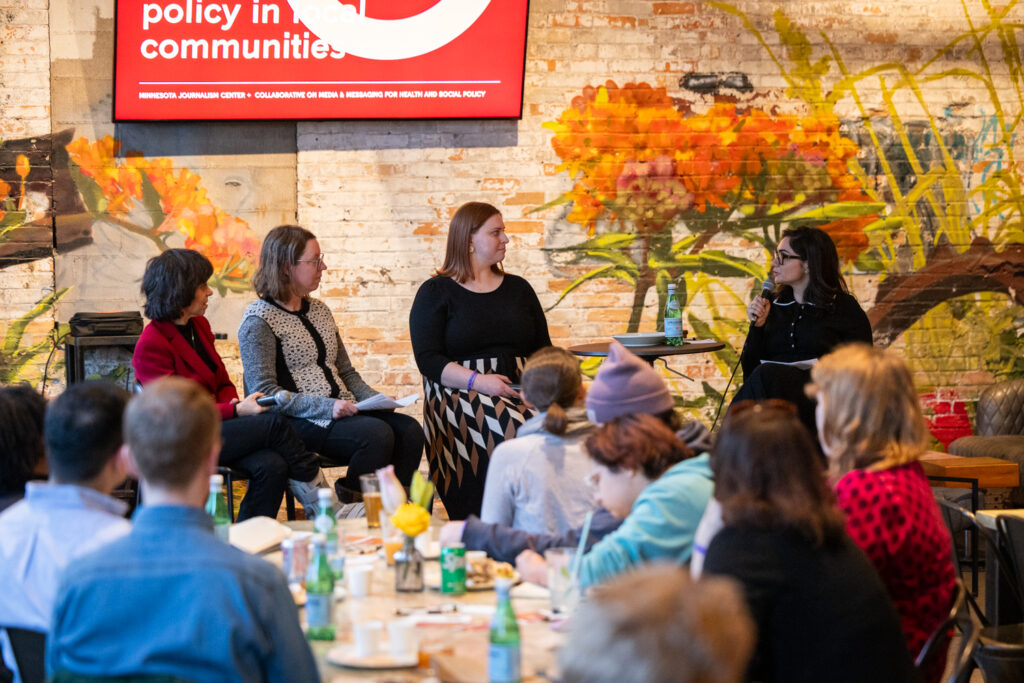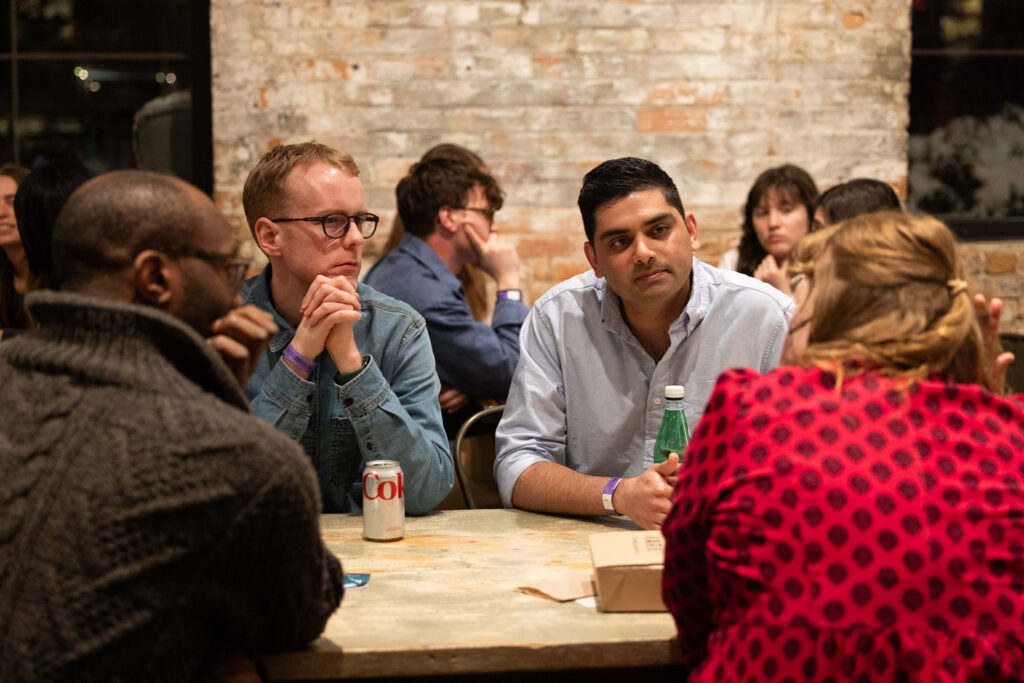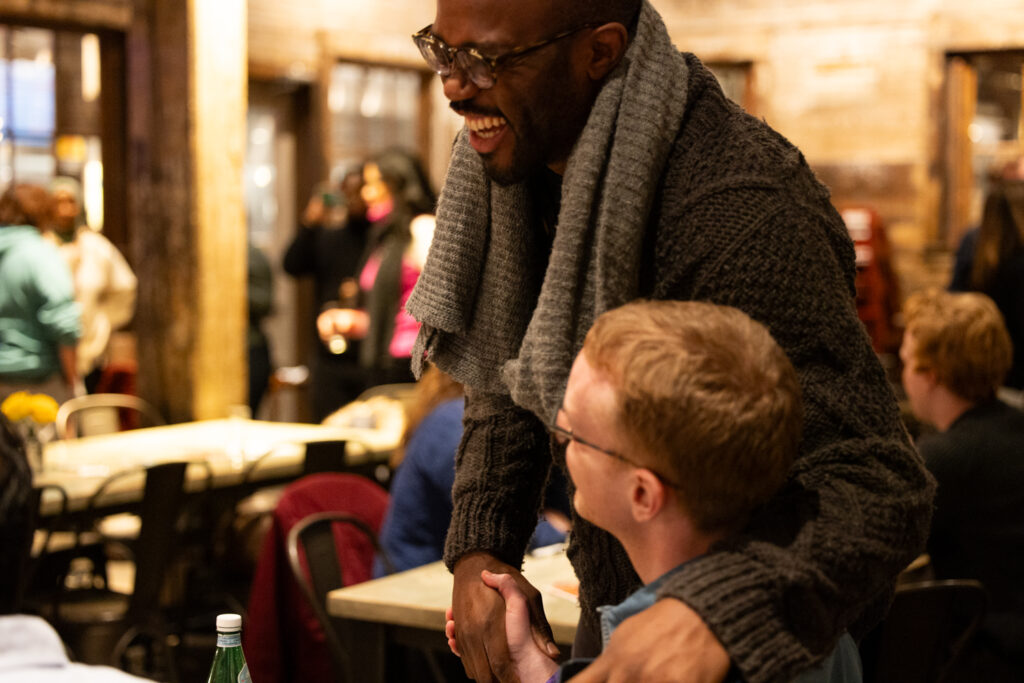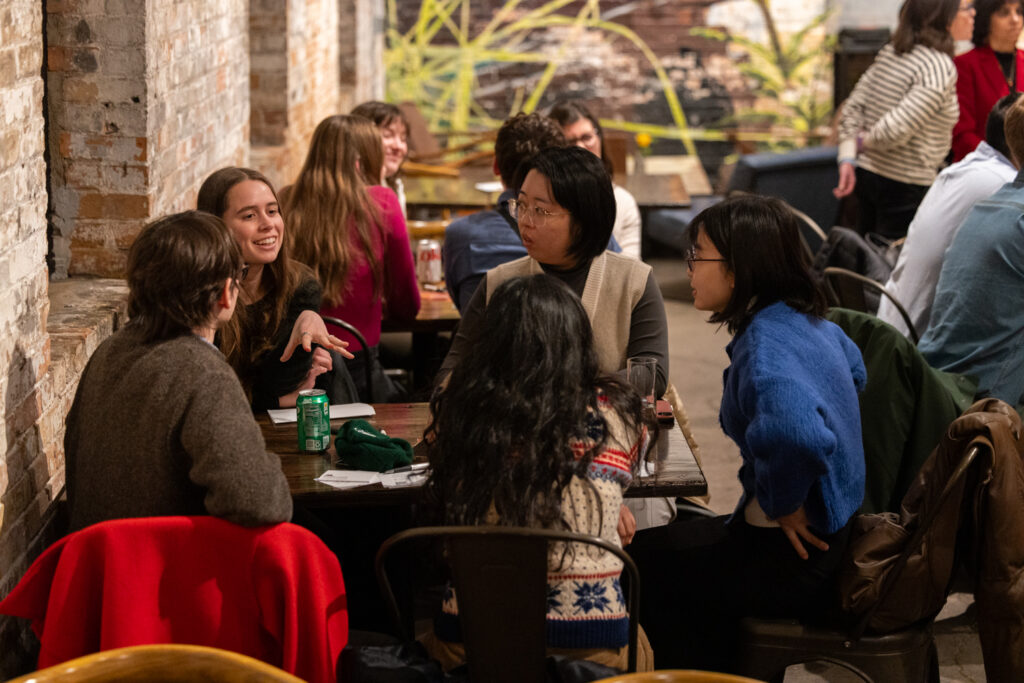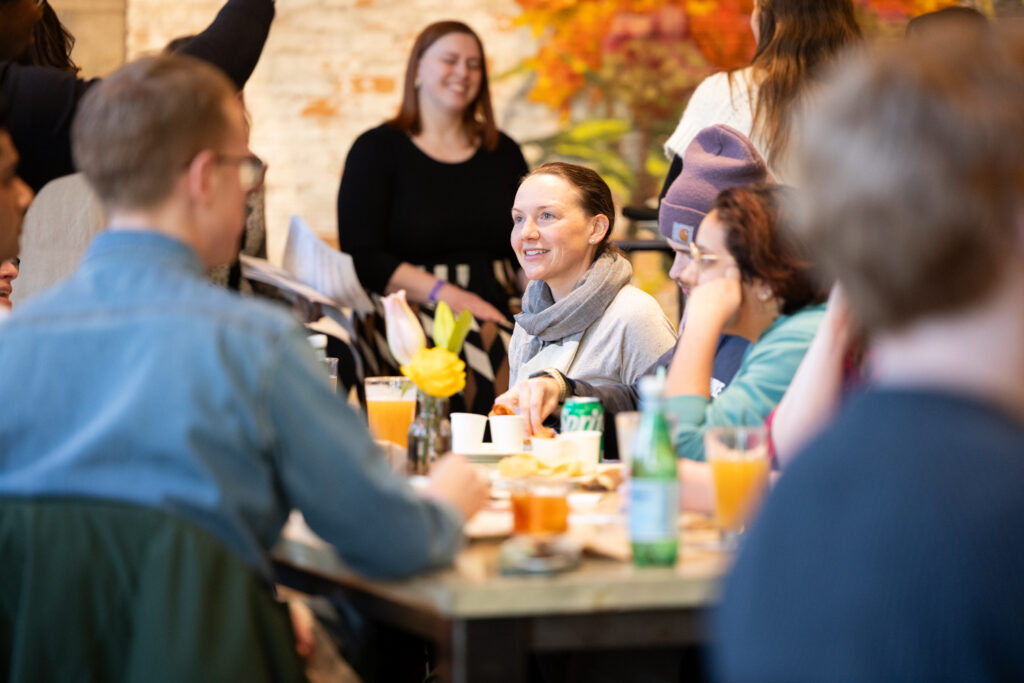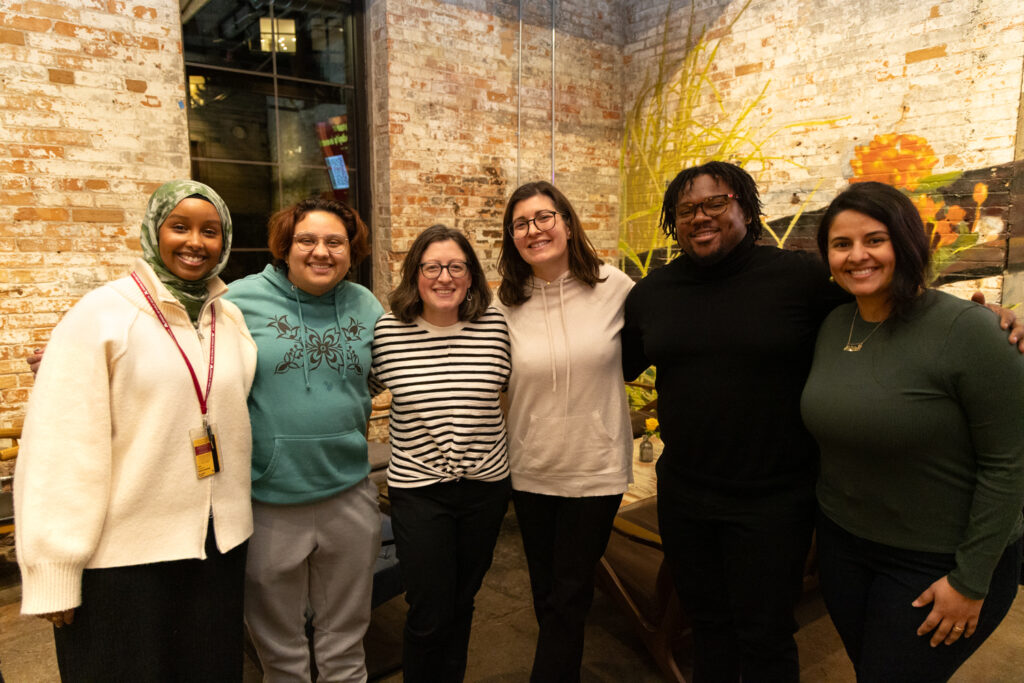Strengthening Local Journalism’s Role in Public Health: Key Takeaways from Our March 5 Panel
On a cold, snowy evening in Minneapolis, a dedicated crowd gathered at The Market at Malcolm Yards for a vital conversation: How can local journalism better serve public health? Despite the winter weather, the warmth of engaged discussion filled the room as journalists, public health professionals, and community members came together to explore the challenges and opportunities in health reporting.
Co-hosted by our team and the University of Minnesota’s Hubbard School of Journalism and Mass Communication and the Minnesota Journalism Center, the event brought together top health journalists—Joanne Kenen (Politico, Johns Hopkins), Dené Dryden (Rochester Post Bulletin), and Sheila Eldred (Sahan Journal)—with MPR’s Nina Moini skillfully moderating the discussion.
Building Bridges Between Journalists and Public Health Experts
The panelists agreed that stronger relationships between journalists and public health practitioners are essential for better reporting. Key takeaways included:
- Long-term relationships with researchers and policymakers lead to deeper, more nuanced stories, moving beyond crisis-only coverage.
- Trust takes time, especially in communities that have been historically mis- or under-represented. Journalists should prioritize ethical, ongoing engagement with sources.
- Practical challenges—like tight deadlines and shrinking newsroom resources—mean public health experts can help by being accessible and proactive in sharing their expertise on timelines that meet journalists’ reporting needs.
Shared Challenges, Shared Solutions
The discussion highlighted how both journalists and public health professionals face similar systemic hurdles, including funding cuts, institutional barriers, declines in public trust, and the spread of misinformation. The panel emphasized:
- The need for clear communication—public health research should be presented accessibly, while journalists must balance accuracy with engaging storytelling.
- The role of local media in combating misinformation, particularly in underserved communities where trust in institutions may be low.
A Room Full of Passionate Practitioners
The audience reflected the intersection of journalism and public health, with health reporters, public health researchers, and communications professionals sparking thoughtful dialogue. The energy in the room was palpable—proof that these conversations matter.
Even after the panel ended, networking continued, with new connections forming over shared goals. It was clear that attendees left with fresh ideas—and a renewed commitment to strengthening the relationship between journalism and public health.
Final Thoughts: The Work Continues
The event underscored that strong local journalism is essential for public health, but it requires partnership, trust, and persistence. As newsrooms and health institutions navigate challenges, events like this remind us that better collaboration leads to better outcomes for communities.
We’re grateful to our panelists, moderator, and attendees for braving the snow to make this conversation happen. If you missed it, stay tuned—because this dialogue is just getting started.
(Check out some great moments from the event below!)
